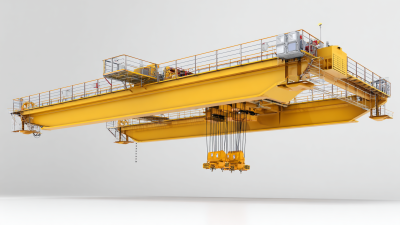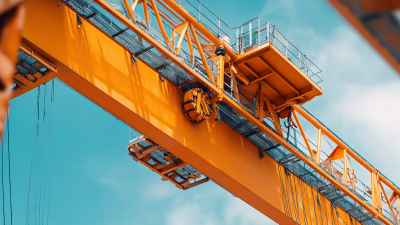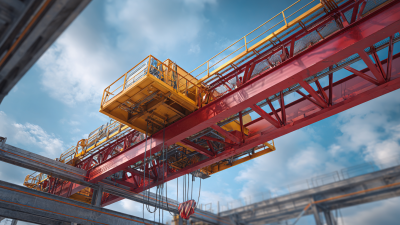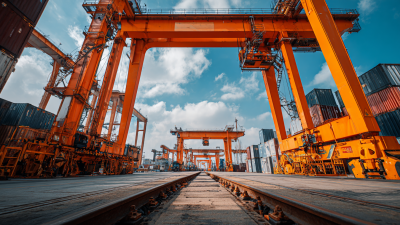Inquiry
Form loading...
-
Phone
-
Wechat

-
Whatsapp

In the realm of modern manufacturing, achieving operational efficiency is paramount, and one crucial component that significantly contributes to this goal is the Over Head Bridge Crane. According to the latest industry reports, facilities that effectively implement such cranes can improve their material handling productivity by up to 30%, drastically reducing cycle times and labor costs. Over Head Bridge Cranes not only optimize workflow by providing precise and reliable lifting solutions but also enhance safety by minimizing manual handling risks. As businesses continue to seek innovative ways to streamline processes and cut down expenses, understanding the functionality and proper integration of Over Head Bridge Cranes has become indispensable. This guide aims to illuminate best practices for maximizing efficiency in manufacturing environments, showcasing how these cranes can be leveraged to achieve superior operational outcomes.

Overhead bridge cranes play a crucial role in maximizing efficiency within manufacturing environments by facilitating the movement of heavy loads. These cranes come in various types, including top-running and under-hung configurations.
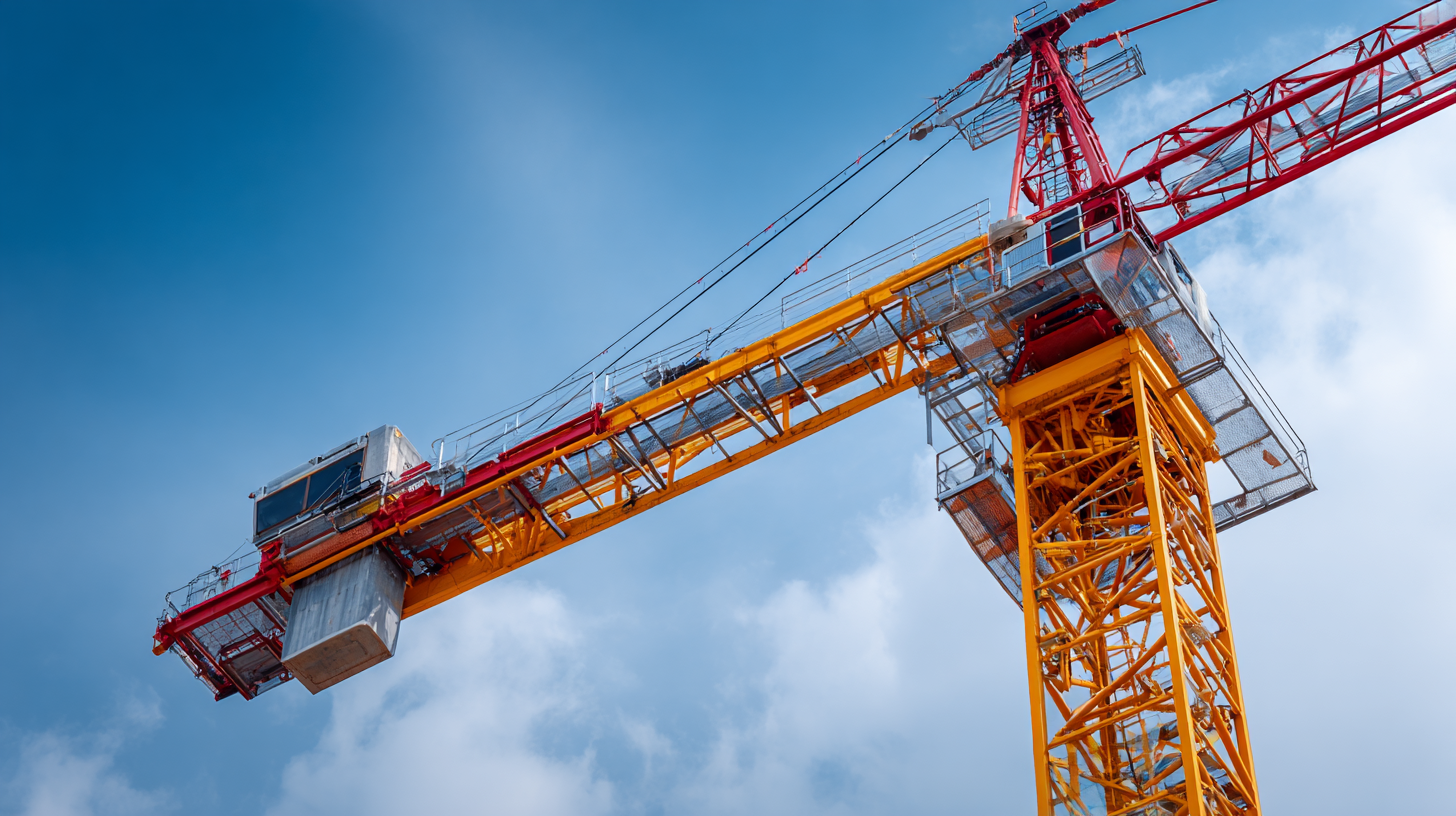 Top-running cranes are mounted on the roof structure, providing greater lifting heights and allowing for greater hook coverage. In contrast, under-hung cranes move along a beam that is supported from below, making them ideal for spaces with limited headroom. Each type is designed to meet specific operational needs, ensuring that manufacturing processes run smoothly and effectively.
Top-running cranes are mounted on the roof structure, providing greater lifting heights and allowing for greater hook coverage. In contrast, under-hung cranes move along a beam that is supported from below, making them ideal for spaces with limited headroom. Each type is designed to meet specific operational needs, ensuring that manufacturing processes run smoothly and effectively.
In addition to varied types, overhead bridge cranes are equipped with features that enhance their usability and safety. Some models offer advanced control systems, enabling operators to maneuver loads with precision. Safety features such as load limiters, anti-collision systems, and emergency stop buttons are essential to reduce the risk of accidents in a busy manufacturing setting. These cranes are utilized across multiple applications, from automotive assembly lines to warehouse operations, significantly improving workflow and productivity by allowing for quick and safe movement of materials and components.
To effectively measure the efficiency of overhead bridge cranes in a manufacturing facility, it is crucial to establish clear Key Performance Indicators (KPIs) that align with operational goals. First and foremost, one of the primary KPIs is the crane utilization rate, which reflects how often the crane is in use compared to the total available time. This metric helps identify potential downtime and areas for improvement in scheduling and workflow. Additionally, monitoring cycle time – the duration it takes to complete a lift and transport task – provides valuable insights into operational efficiency. A reduction in cycle time often correlates with increased productivity, making it essential for management to analyze routine operations regularly.
Another important KPI is the load handling performance, which assesses the weight capacity regularly lifted by the cranes. This indicator ensures that the equipment is not only used optimally but also within safety limits, preventing potential equipment failures and safety hazards. Furthermore, tracking maintenance frequency and crane downtime can help in maintaining high efficiency levels. By analyzing these KPIs comprehensively, facilities can adopt a proactive approach to optimizing their overhead bridge crane operations, leading to improved productivity and reduced operational costs.
Integrating automation into overhead bridge crane operations is revolutionizing the manufacturing landscape, driving efficiency and safety to new heights. A report by the Association for Manufacturing Technology (AMT) highlights that over 70% of manufacturers are exploring automation solutions to improve their operational workflows. Smart technology, including IoT-enabled sensors and AI-driven software, is at the forefront of this transformation, allowing for real-time monitoring and predictive maintenance, which can reduce downtime by up to 25%.
Additionally, the integration of automated systems facilitates enhanced data analytics, providing operators with insights that were previously unattainable. According to a study by McKinsey & Company, facilities that implement advanced automation can see productivity improvements of up to 30%. As smart technology continuously learns from its operational environment, it optimizes load handling and minimizes human error, thereby creating safer and more efficient working environments. Such advancements not only streamline production processes but also drive down operational costs, making the investment in automated overhead bridge cranes an attractive proposition for manufacturers looking to remain competitive in an ever-evolving market.
| Feature | Description | Benefit | Automation Type |
|---|---|---|---|
| Remote Control | Operators can control cranes from a distance. | Increases safety and reduces operator fatigue. | Full Automation |
| Load Monitoring Systems | Sensors that measure the weight of the load. | Prevents overloads and enhances operational efficiency. | Semi-Automation |
| Software Integration | Cranes integrated with manufacturing management systems. | Improves communication and workflow across the production line. | Fully Integrated Automation |
| Automated Route Planning | Algorithms that plan the most efficient path for cranes. | Reduces travel time and minimizes downtime. | Full Automation |
| Collision Detection Systems | Sensors that detect obstacles in the crane's path. | Enhances safety and prevents accidents. | Fully Integrated Automation |
Maintaining overhead bridge cranes is crucial for maximizing their efficiency and lifespan. Regular inspections and maintenance practices can identify potential issues before they escalate, ensuring smooth operations in manufacturing environments. One common concern is the failure of brake wheels, often caused by defects in the circular surfaces. Addressing these defects promptly can prevent safety hazards and operational downtime, thereby preserving production efficiency.
As the industrial landscape evolves, manufacturers of overhead cranes are adapting their strategies to meet changing demands. The integration of advanced technology not only streamlines maintenance procedures but also enhances the overall durability of crane systems. Emphasizing sustainable practices in the design and manufacturing of these cranes ensures that companies can maintain compliance with environmental regulations while improving their operational efficiency. Prioritizing maintenance best practices and staying ahead of industry trends is essential for prolonging the lifespan of overhead bridge cranes and ensuring their reliability in production settings.
When evaluating the return on investment (ROI) of implementing overhead bridge cranes in manufacturing, it's essential to analyze both the direct and indirect benefits these systems bring to the production environment. Overhead bridge cranes can significantly enhance operational efficiency by optimizing the movement of materials and reducing manual handling. This leads to decreased labor costs and enhanced worker safety, as heavy lifting tasks are automated, lowering the risk of workplace injuries.
In addition to these immediate advantages, manufacturers can streamline their workflows, ultimately speeding up production times. By analyzing factors such as increased throughput, reduced downtime, and lower maintenance costs, companies can quantify the financial gains derived from integrating overhead bridge cranes. Conducting a thorough cost-benefit analysis will illuminate how the initial investment can pay off in the long run, making a strong case for their adoption in manufacturing settings.
As businesses strive for efficiency, understanding the ROI of such equipment is key to making informed decisions that support growth and sustainability.



